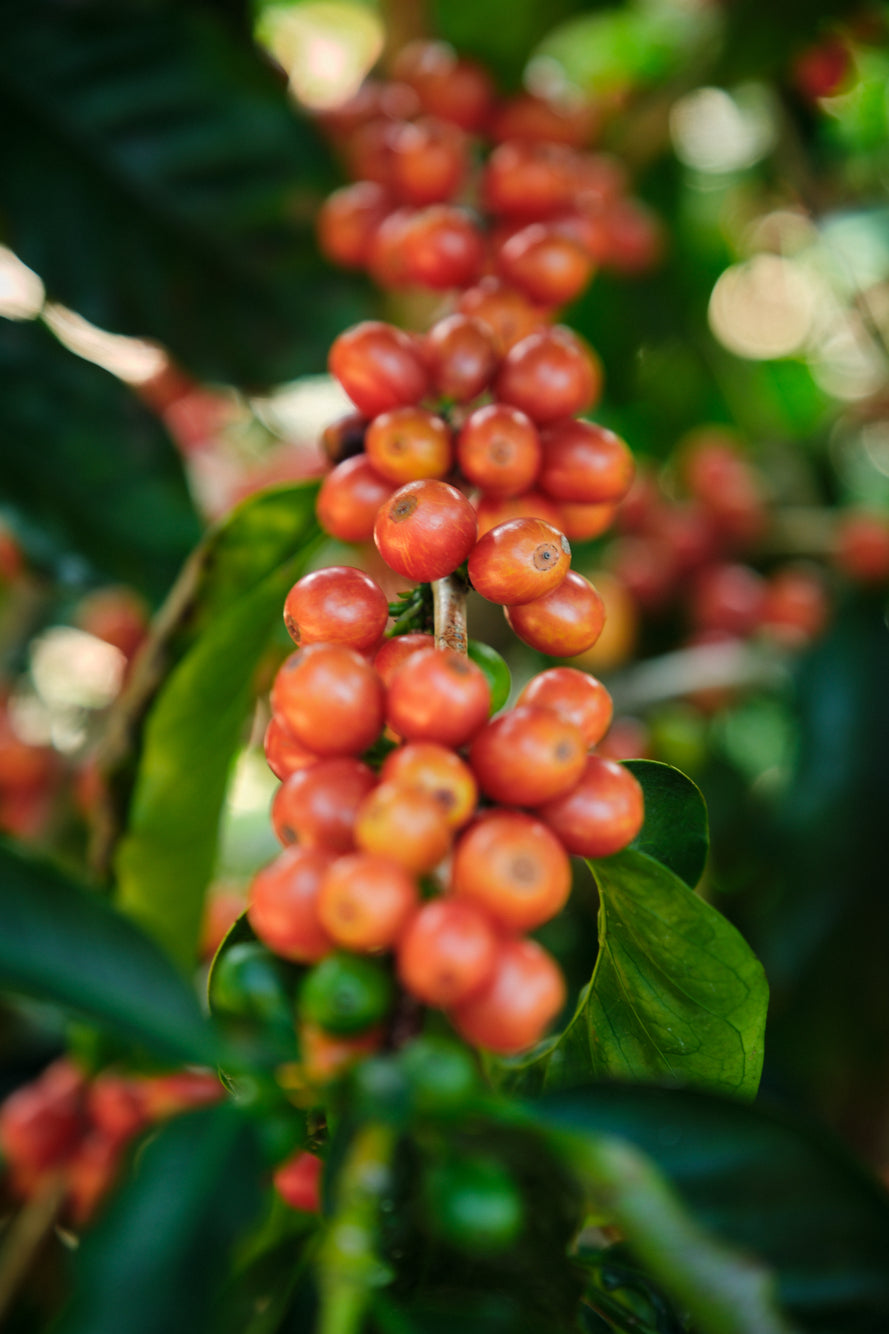Norbey Quimbayo
Norbey Quimbayo, along with his wife and children, owns and operates the farm La Esmeralda. This 12-hectare property dedicates 5 hectares to coffee production, located at an altitude of 1,800 meters above sea level. In addition to coffee, Norbey also cultivates plantains and various fruit trees, including lime and mandarin.
Norbey's journey in coffee began as a picker on various farms across Huila, where he also provided lunches for the workers. In 2005, he seized the opportunity to purchase a portion of what would eventually become La Esmeralda. The income from his coffee cultivation allowed him to gradually expand the plantation to its current size.
In 2010, Norbey ventured into specialty coffee production, introducing exotic varieties such as Gesha, Papayo, and Pink Bourbon. He considers this shift to be his best decision, as it has led to higher premiums and international recognition for his coffees.
Over the years, Norbey has witnessed significant changes in the coffee industry. He recalls that farmers lacked knowledge about optimal cherry-picking times a decade ago, and processing techniques and farming practices were less advanced. These improvements have enabled farmers to produce higher-quality coffee.

Norbey's journey in coffee began as a picker on various farms across Huila, where he also provided lunches for the workers.

Pink Bourbon
Pink Bourbon, a trendy coffee variety known for its pink cherries, was long believed to be a type of Bourbon. However, a recent article by Cafe Imports has revealed it to be an Ethiopian landrace variety.
The history of Pink Bourbon is more folklore than scientific discovery. In 2014, Lucho, a Senior Green Coffee Buyer at Cafe Imports, discovered a coffee plant with pink cherries while exploring Colombia. He later found more Pink Bourbon trees among traditional Bourbon and theorised it was a spontaneous cross between Red and Yellow Bourbon due to their similar appearances.
Genetic testing in 2017 by Cafe Imports, however, showed that Pink Bourbon shared high similarities with Ethiopian coffee genetics. Recent tests by RD2 Vision confirmed all five samples as Pink Bourbon, with some mixed with Bourbon or Catimor, and one "pure" Pink Bourbon.
The article suggests Pink Bourbon may have been introduced as a parent for another hybrid or mistakenly brought over as another Ethiopian landrace variety. This fascinating history demonstrates that even popular coffee varieties can have surprising origins. The discovery of Pink Bourbon's true genetic roots offers valuable insights into coffee's origins and evolution, highlighting the importance of genetic testing in the industry.










